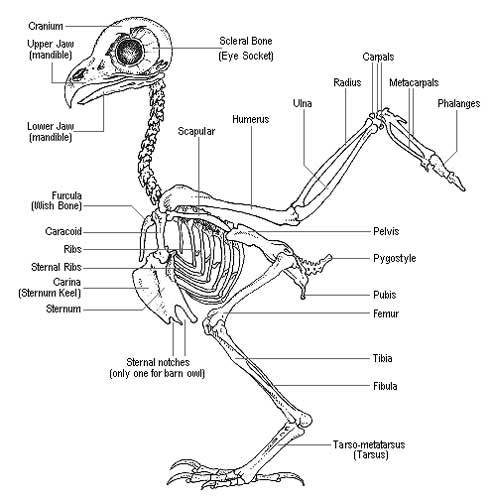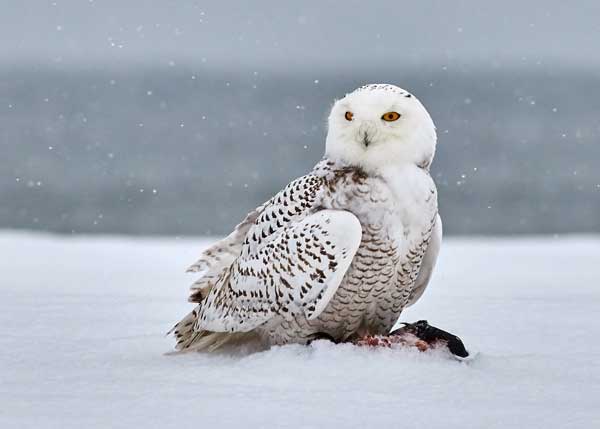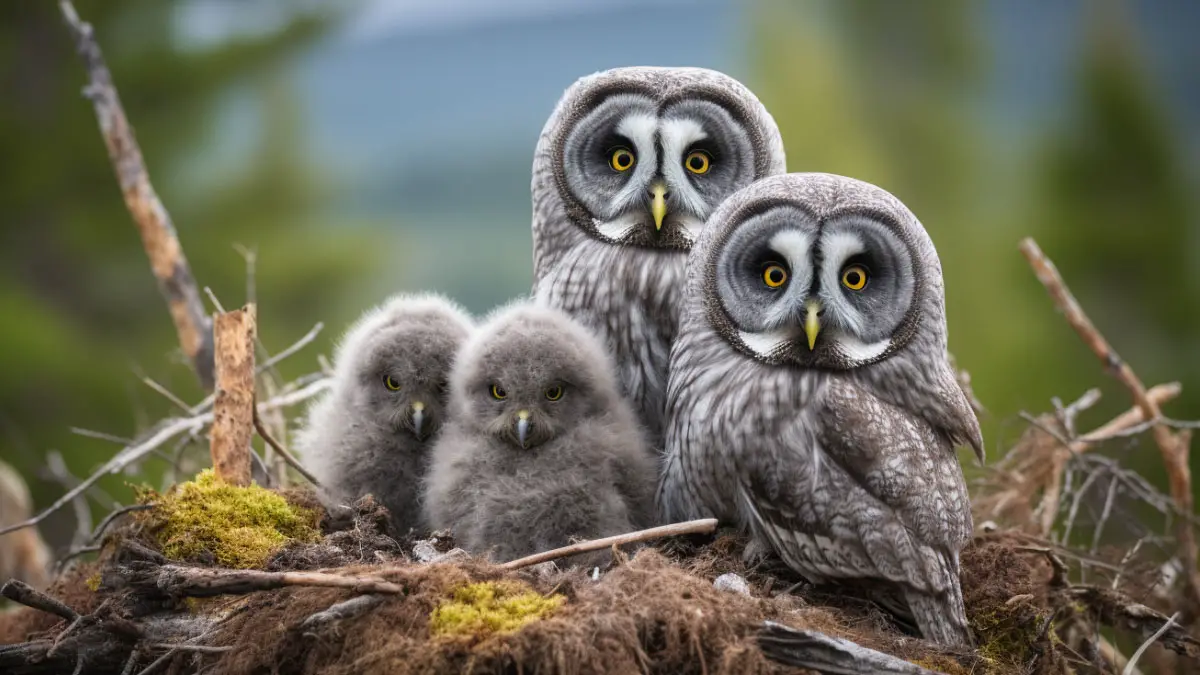Owls are fascinating and enigmatic birds that have captivated people for centuries. Consequently, there are a lot of myths and misconceptions have emerged about these birds.
Accordingly, a debate about their extended legs ensues. Do they really have very long legs? Yes, owls are naturally equipped with long legs that help them hunt, move, grasp, etc. The length varies between two and four inches depending on the species.
This article will explore some common questions and misconceptions about owls’ legs, providing insight into these mysterious birds. You will get an in-depth look into the unique characteristics of these fascinating birds here!
Do Owls Have Long Legs?
Yes. Owls do have long legs in comparison to other birds. However, it’s a myth that all owls have extremely long legs. But in real owl legs can vary greatly depending on the species.

The Great Horned Owl, for example, has relatively short legs compared to other owl species. Its legs are only about 2-3 inches long, which is relatively short compared to its body size. Some species, such as the Screech Owl and the Elf Owl, have shorter legs and talons.
On the other hand, the Snowy Owl has legs that can be up to 4 inches long. However, the length of an owl’s legs is influenced by its
Habitat and Hunting Style
Owls that hunt in open grasslands or meadows, like the Long-Eared Owl, have longer legs than those that hunt in dense forests or wetlands, like the Barred Owl. Longer legs help owls perch higher and have a better view of their surroundings and move more quickly across open terrain.

Diet
In addition to hunting and habitat, the length of an owl’s legs is also influenced by its diet. Owls that primarily eat small mammals, such as the Short-Eared Owl, have relatively short legs.
But those that eat larger prey, such as the Great Gray Owl, have longer legs. Longer legs provide more leverage when catching and holding larger prey.
The Anatomy of an Owl’s Leg
Owls have a unique skeletal structure that allows for extended legs and talons. Unlike other birds, owls have longer femurs and tibiotarsus bones in their legs, which give them an extended appearance. It seems that owls don’t have knees because owl knees are usually hidden.
Also, owls have a thick layer of feathers on their legs, adding to the illusion of longer legs. Actually, their feathers hide their legs.

Can Owls Be As Long As Half The Length Of Its Body?
No. An owl’s legs are usually not a size that is nearly half the length of their body. The length can vary greatly depending on the species. But generally speaking, this would be relatively unusual for owls. Most of the species legs are proportionally shorter than that.

Still, it’s true for some species of owls, such as the Snowy Owl, their legs approximately measure half the length of their body. On the other hand, the Great Horned Owl’s legs can be up to four times as long as its body. But the legs of a Sparrow are only about one-third as long as its body.
How Long Are Owls Legs Actually?
The length of the owl’s leg is not fixed for all species. It ranges from 2-4 inches. For instance, snowy owls have relatively longer legs measuring 4 inches than Great Horned Owls, having 2 inches legs only.
Owls are birds and have adaptations for flying, such as short, strong legs and sharp talons for grasping prey. The length of the legs is also closely tied to the habitat and hunting habits.

For example, an owl that lives and hunts in open areas, like the Burrowing Owl, will have longer legs than an owl that lives and hunts in trees, like the Great Horned Owl.
Who has the Longest Leg among the Owls?
People suspect Eagle owls (Bubo bubo) are honoured with the longest legs. Their legs may be somewhat between 20 to 30 cm long. It is said because it is the tallest species. However, it’s not quite easy to determine which owl has the longest legs among all of these different species.
Nevertheless, it’s not confirmed because small species, such as burrowing owls also had long legs. The scientist does not yet know the solution.

There are more than 200 different owl species. And nature made them unique in size, shape, hunting technique, power, etc. One interesting feature of owls is that they have a very short beaks though having extended legs.
Do Burrowing Owls Have Long Legs?
Burrowing owls are known for their long legs, which can be up to one and a half times the length of their body. This is a unique feature among owl species, as most other owl species have legs that are shorter in proportion to their body.

Besides, burrowing owls are exceptional birds because they love to hide under a crater, hence named ground owls. The hole is either created by themselves or taken over from a prairie dog or tortoise. Unlike other small owls, they comprise a unique body part- yellow colour extended legs.
Why Do Burrowing Owls Have Long Legs?

Burrowing owls have multiple uses for their long legs-
- First, they aid in hunting and grasping prey, much like other owl species
- The primary purpose of their long legs is to help them move through their underground burrows more easily. Burrowing Owls often hunt in their burrows, and their long legs allow them to move through the tunnels easily
- Thirdly, their legs also allow them to perch at high vantage points, such as on fence posts, to watch for prey
- Finally, the length of their legs relative to the body make them look larger and more intimidating. This can help deter predators from attacking them.
“Burrow owl, with legs so long,
In underground tunnels, you belong,
Silent hunter, with a unique style,
In the owl world, you truly smile.”
How Do Owl Species With Extended Legs Differ In Their Hunting Habits?
Extended owl legs may have slightly different hunting habits than shorter ones. For example, species with extended legs may be better adapted to hunting in open fields or grasslands, where they can use their legs to chase down and capture prey.

Other species may use their legs to wade through shallow water or soft ground to capture aquatic prey. Each species’ hunting habits are unique and depend on its habitat, prey availability, and other factors.
Importance Of Extended Owl Legs In Survival And Adaptation

Extended legs in owls are important for survival and adaptation in several ways.
Better Hunting
First, long legged owls reach prey that might be out of the reach of other birds. The Great Horned Owl, for example, has relatively longer legs than other birds. This gives it an advantage when hunting small mammals and other animals on the ground. Their powerful talons also aid in capturing their prey.
Traverse Snow
Longer legs help owls wade through deep snow, which is crucial for species like the Snowy Owl in arctic regions. This feature allows them to hunt for small mammals under the snow and also enables them to walk on top of the snow to hunt for prey.

Easy Roaming
Third, the long legs of the Burrowing Owl help them move around in their underground burrows, their primary habitat. This feature allows them to move around quickly and easily, and to escape from potential predators.
Weapons For Prey & Protection for Owls
Owls use their extended feets as weapons to kill their prey i.e rupture the skull. At the same time, long feet protect them from the attack of prey.
Overall, extended legs in owls are an adaptation that helps them to survive in different environments and to capture prey efficiently. nny owl long leg

FAQs
Owls are a kind of mysterious bird that always attracts different people. Read the following FAQs to learn more about owls.
Yes. Some species may have legs that appear skinny, while others have sturdy legs. But it is not fair to generalize all owls as having skinny legs as each species has legs adapted to their specific needs and environment.
Some species with strong legs can hold their prey tightly and are also able to fly silently by grasping their feathers.
No, not always. Longer legs can be advantageous for hunting in open spaces, but they can also be a liability in forested or wetland areas. Each owl species has legs tailored to its particular environment and hunting habits.
An owl perched on a tree branch cross legged may appear to be in a relaxed and content state. This posture may indicate that the owl is comfortable in its surroundings and not feeling threatened.
Owls are known for their ability to blend into their environment, and a cross legged posture may help the owl to remain hidden from potential prey or predators.
Additionally, owl legs crossed posture may also help the owl to conserve energy and stay still for long periods while hunting. Overall, a cross-legged posture in an owl may be a sign of both safety and readiness.
Yes, but when attempting to identify a particular species of owl, additional characteristics such as feather pattern and colour, as well as habitat, are also crucial to take into account. However, a clue may lie in the length of the legs of an owl species, but this is not a surefire way to tell.
Final Words
In conclusion, owls do have longer legs than other birds. Their unique anatomy helps them hunt and catch prey as well as maintain a stable perch. However, not all owl species have long legs, those that do stand out in the avian world.
Accordingly, each species of owl, from the Great Horned to the Burrowing, has its distinctive traits, but one thing is for sure: their legs are essential to their survival and hunting prowess.
“Owls, the silent hunters of the night,
With eyes that pierce the darkness and take flight,
Majestic and mysterious, they reign supreme,
In the world of birds, they are the ultimate dream”








